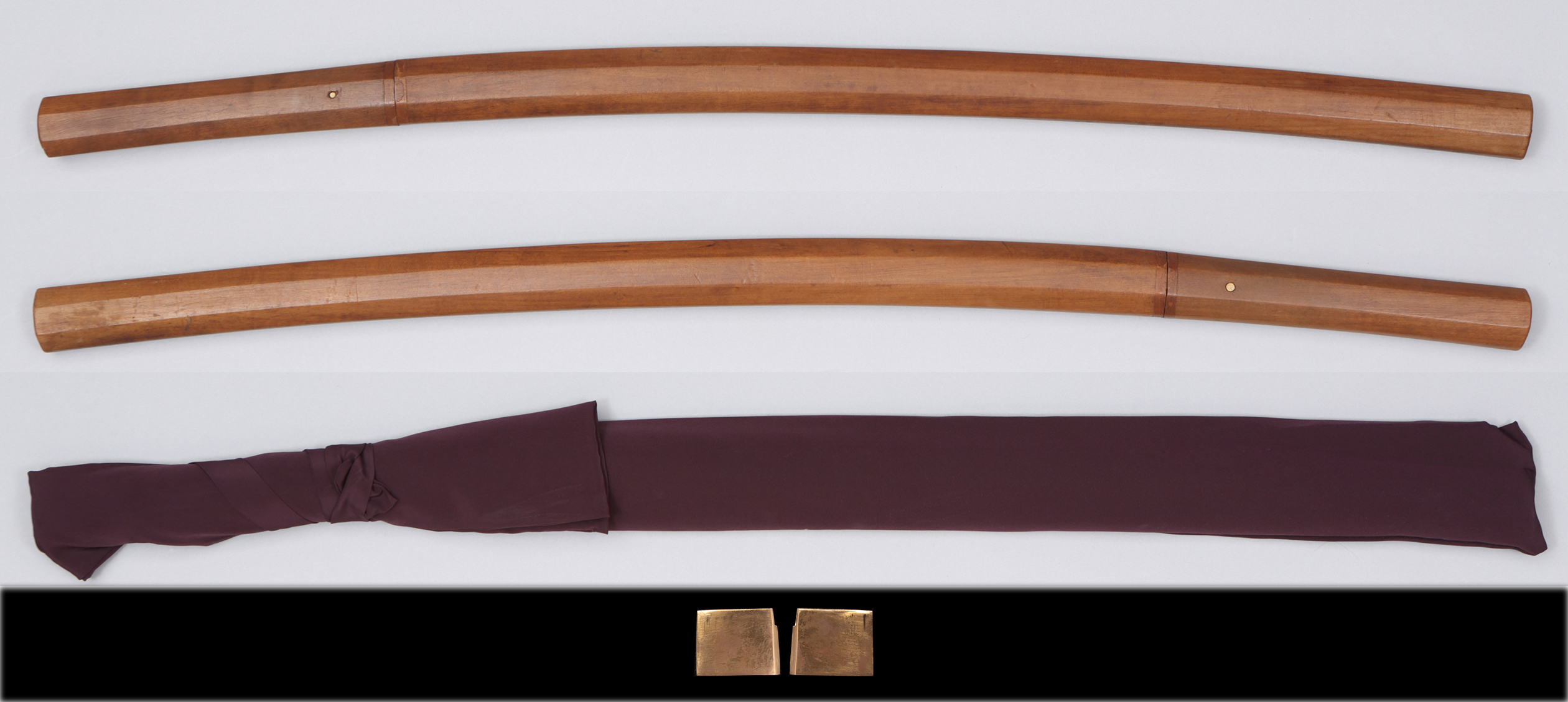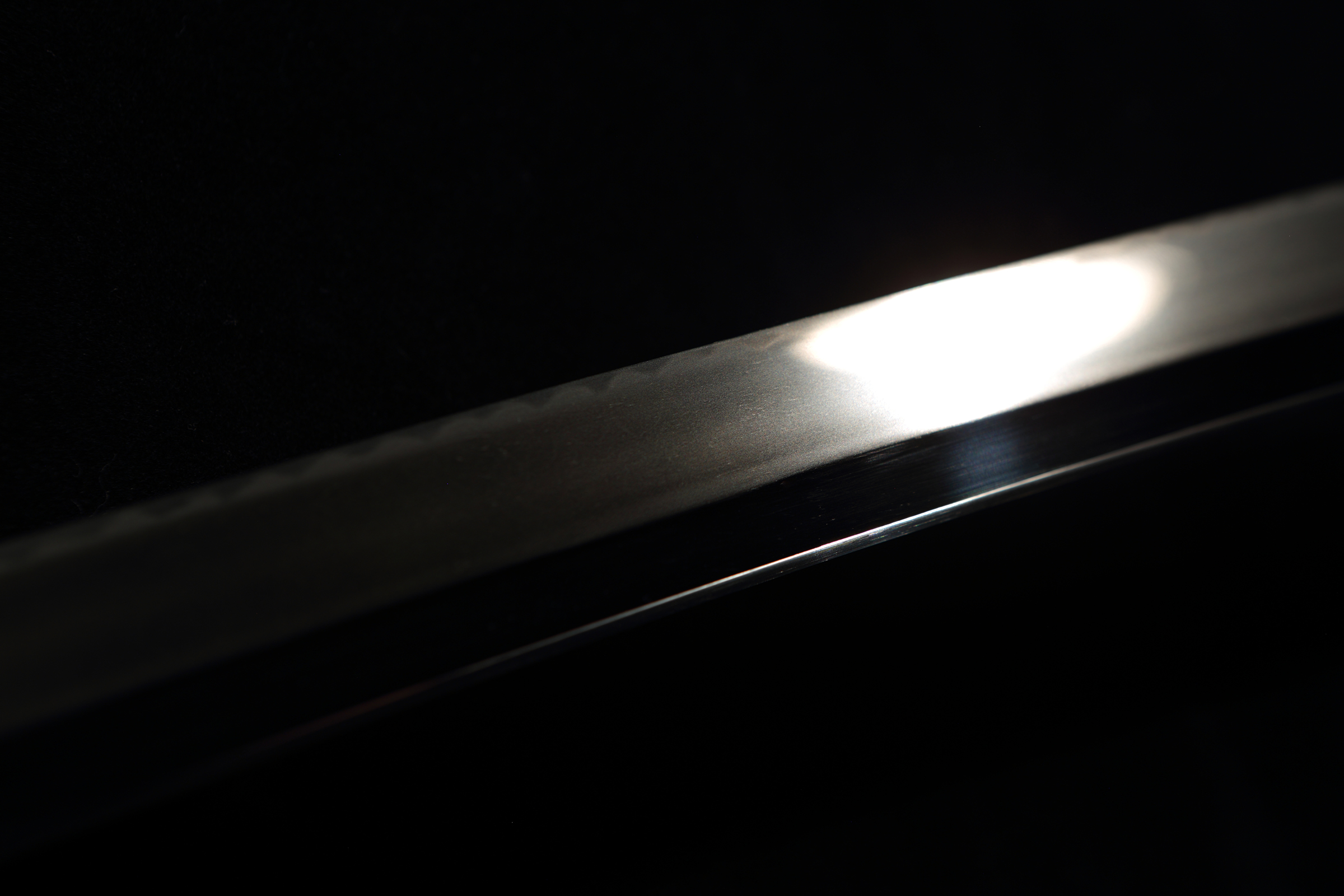
  |
Katana, Shirasaya |
Mumei, attributed to Yoshii
|
[ Signature ] omote : no signature ura : - |
[ Size ] Blade length 64.2cm (2 shaku 1 sun 1 bu 8 rin), curvature 1.2cm (3 bu 9 rin), Moto-haba base width 2.93cm, Moto-kasane 0.63cm, Saki-haba tip width 2.12cm, Saki-kasane tip thickness 0.37cm, 3 mekugi holes, blade weight 674g, shira-saya total length 93cm |
[ Period ] Muromachi |
[ Province ] Bizen |
 |
[ Feature ] |
[ Attachments ] Habaki (copper-migaki-ji, single). shirasaya, bag of shirasaya and NBTHK hozon paper 保存刀剣鑑定書(issued on 3rd June Reiwa 4(2022)) |
 |
[ Item number ] A120924 [ Price ] JPY 240,000- (shipping and insurance fee are not included in the price) |
Please order by E-mail.

About TOUKEN KOMACHI
BACK
TEL +81-(0)3-5284-9014/ FAX +81-(0)3-5284-9043____E-mail : s_tsukada@toukenkomachi.com
Copyright © 2009- Touken komachi All rights reserved. |